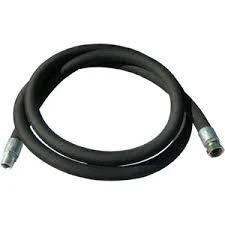ford power steering hose replacement
Replacing Your Ford Power Steering Hose A Comprehensive Guide
Replacing the power steering hose in your Ford vehicle is an essential maintenance task that ensures smooth steering and optimal vehicle performance. If you're experiencing issues like steering stiffness or fluid leaks, it might be time to assess and possibly replace your power steering hose.
Understanding the Power Steering System
The power steering system relies on hydraulic fluid to assist you in steering with ease. The power steering hose, often made of rubber or a similar material, carries this hydraulic fluid from the pump to the steering gear. Over time, these hoses can become brittle, develop cracks, or leak, leading to reduced steering effectiveness and potential damage to other components.
Signs of a Failing Power Steering Hose
1. Fluid Leaks The most common indication of a failing power steering hose is visible fluid pooling under the vehicle. The fluid usually has a reddish tint and a distinct oily texture. 2. Steering Difficulty If you notice that your steering wheel has become harder to turn, it could be a sign of low power steering fluid levels due to a leaking hose.
3. Noise Unusual whining or grinding noises when turning the steering wheel can also indicate issues within the power steering system, possibly stemming from a damaged hose.
Steps for Replacement
ford power steering hose replacement

1. Gather Tools and Materials You will need a replacement power steering hose, wrenches, a fluid catch can, and a funnel. Ensure you have the right hose that is compatible with your specific Ford model.
2. Safety First Park your vehicle on a level surface and engage the parking brake. It’s essential to allow the engine to cool down before starting any work.
3. Remove the Old Hose Begin by locating the power steering pump and the steering gear. Use the wrenches to disconnect the old hose from both ends. Be prepared for some fluid spillage, so have your catch can ready.
4. Install the New Hose Position the new power steering hose in place and secure it using the appropriate wrenches. Ensure all connections are tight to prevent future leaks.
5. Refill Power Steering Fluid After the installation, refill the power steering reservoir with the recommended fluid. Start the engine and turn the steering wheel from side to side to help eliminate air pockets within the system.
6. Test the System Finally, check for any leaks and make sure the steering feels smooth. It's crucial to monitor the system closely for the first few drives after replacement.
Conclusion
Replacing the power steering hose in your Ford is a straightforward process that can save you from more extensive repairs down the road. Regularly check your power steering system to ensure that everything is functioning properly, and don’t hesitate to seek professional help if you’re uncertain about any steps in the process. Maintaining your vehicle’s power steering system is vital for your safety and comfort on the road.
-
Ultimate Spiral Protection for Hoses & CablesNewsJun.26,2025
-
The Ultimate Quick-Connect Solutions for Every NeedNewsJun.26,2025
-
SAE J1401 Brake Hose: Reliable Choice for Safe BrakingNewsJun.26,2025
-
Reliable J2064 A/C Hoses for Real-World Cooling NeedsNewsJun.26,2025
-
Heavy-Duty Sewer Jetting Hoses Built to LastNewsJun.26,2025
-
Fix Power Steering Tube Leaks Fast – Durable & Affordable SolutionNewsJun.26,2025

